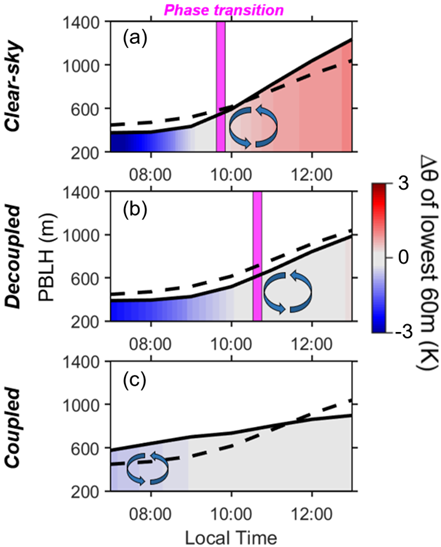Cloud-surface coupling modulates boundary-layer development
Submitter
Su, Tianning — Lawrence Livermore National Laboratory
Li, Zhanqing — University of Maryland
Area of research
Cloud Processes
Journal Reference
Science
The contrasting effects of decoupled and coupled clouds on the development of the planetary boundary layer (PBL) are discovered, advancing our knowledge and understanding of boundary-layer processes and cloud dynamics.
Impact
The interactions between low clouds and the PBL are complex, and our understanding is fraught with uncertainties. This study sheds light on the substantial impacts of cloud-surface coupling on the morning transition from a stable to an unstable boundary layer, tackling a crucial aspect of PBL diurnal variations and emphasizing the importance of integrating cloud-surface coupling into PBL parameterizations.
Summary
During the morning, the PBL usually undergoes the transition from stable to neutral or convective conditions driven by surface heating, which significantly impacts lower-tropospheric thermodynamics. This study demonstrates that cloud-surface coupling substantially influences the transition and the diurnal variations of both PBL and clouds. We find that decoupled clouds can delay the process of eroding the nocturnal inversion by 0.8 hours. They can even prevent the transition of the boundary layer in 12% of the cases examined due to the reduction in surface fluxes, stabilizing the boundary layer at noon. When clouds are coupled with the surface, cloud-top radiative cooling directly cools the upper boundary layer, promoting sub-cloud convection and leading to an unstable boundary layer earlier in the morning. By illuminating the distinct effects of cloud-surface coupling on PBL development, this research advances our fundamental understanding of boundary-layer processes and cloud dynamics.


